Introduction To Ranting About Doorways
Doorways are interesting things, and in my opinion, they’re also rather underrated and underused in modern magic. Well, at least from what I’ve seen

anyway. Which you know, considering that I’m the kind of person to either work in ridiculously niche groups or alone, that’s not saying a whole lot. I mean, for all I know, you’re all rocking the doorway-thing, and it’s way bigger among the cool kids than St Cyprian was a few years ago.
(Please tell me this is true?)
But things were quite different in Heathen period Northwestern Europe. For one thing, they didn’t have the internet to start massive “witch wars” on. Nor did they have convenient sandwich makers upon which to create endless grilled cheese sandwiches to get fat on.
Life was just different back then.

One thing they did have though, was burial mounds. Yes, wonderful, boob-shaped containers for the dead. (Or pudendas. Honestly, whichever junk-based imagery you like best is good here).
And some of those wonderful bosoms of final doom also have what appear to have been post holes in front of them. Or more specifically, post holes for (most likely) doorways.
Now this may sound like completely irrelevant bollocks, but it’s not, and to find out why, you need to stick with me through a minor detour.
Oh Look! A Conveniently Labeled Digression!
So, these pudendas of death didn’t just have post holes. No, some of them also have what appear to have been ditches. And moreover, pollen analysis of some of those ditches demonstrates that they used to be filled with water for at least part of the year. This would have turned these mounds into temporary, de-facto islands of the dead.

When you factor in the amount of European death lore that describes the dead crossing over water of some kind to the afterlife, it’s not hard to see the applications for all kinds of dead-related activities here.
The point I’m making with this digression?
We often build our holy places with ritual and cosmology in mind. If you want to figure out ritual and cosmology, it’s good to look at the holy places.
YAY!!!! The Return of the Original Point!
Now, a bunch of post holes wouldn’t really be anything, and we wouldn’t necessarily guessing that they’re door posts were it not for a continuous thread of ritual doorpost usage connected with the dead.
Moving forward in time to the Viking Age (you know, that time period all the

bros like to fap off over), you have the doorway burials of the Viking age. You see, some folks back then would actually bury the people they wanted to stick around post mortem in the doorways of their homes.
Well, there’s nothing like keeping the family together, amirite?
As you might expect though, this backfired sometimes. Most usually when the person you unwisely decided to give visitation rights to was a raging dick in life. You see, rule number one of ‘Necromancy Club’ is that a rabid cockwomble in life is sure to be a rabid cockwomble in death. People don’t just automatically become wise and loving ancestors; there’s a process for that in most cultures that still have coherent ancestor cults. Unfortunately, most of us in modern WEIRD Pagan communities come from cultures where the death rites were taken over by some imperialist death cult that worships a dead dude on a torture/execution device. So, to say that our ideas on all of the above can be a little fucked up and unhealthy is something of an understatement.
But anyway, doorways!
They were a thing in the foul arte of necromancy back in the day. (Although to be fair, it was probably just called “going to ask Aunt Guðrún about that there thing we were talking about”.)
“Wake aunt Guðrún, wake auntie good.
At the back door I call you (to ask you where our fucking sheep went)”
And she’d bitch you out, call you crazy, and then tell you want you need to know. That’s a filch of an actual invocation btw. It’s from Svipdagsmal, and yes, it mentions doors.
The Final Point!
Aye, so doorways are interesting things. To stand between doorposts is to be neither in nor out, neither here nor there. It is to stand in a liminal place in which things may be seen, and through which things may pass (albeit when engineered a little bit…)

One of the best things about doorways too is their availability, so you don’t need to drop a load of cows or bling on obtaining fancy schmancy stuff. Because if you don’t have any kind of doorways and don’t have access to some woods where you can create arches in the trees to work in, then you’re probably a fair way up shit creek and should be working on other stuff first.
So yeah…give it a go.
The first time I tranced in a doorway, my garden filled with mist, a storm blew in, and I heard screams on the wind. I’m not claiming the storm here, but to hear the screaming on the winds of a storm that had taken lives on its way across the land before hitting my area? Would I have heard them had I not been trancing in a doorway? Who knows! But still. Doorways are useful things in magic, and they have the benefit of being easy to get out of if things become a bit much.
Don’t like seeing what you’re seeing? Go in and close the door. Make sure your wards are awesome. Good times!
Well, that’s it for me today. I’m currently in the middle of packing for going to Iceland where I’ll be co-hosting this trip with Morgan Daimler!


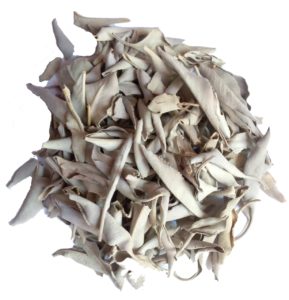




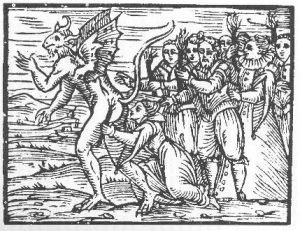

 dead.
dead. “whiteness” in this post. When I speak of “whiteness”, I speak of a construct that sits in our society like a gated community that limits its entry to those who fit certain criteria. To reiterate, this is not a post about the the intrinsic and innate, of melanin and ancestry. It is a post about a social construct which actively excludes, harms, and which I believe to be completely incompatible with Witchcraft.
“whiteness” in this post. When I speak of “whiteness”, I speak of a construct that sits in our society like a gated community that limits its entry to those who fit certain criteria. To reiterate, this is not a post about the the intrinsic and innate, of melanin and ancestry. It is a post about a social construct which actively excludes, harms, and which I believe to be completely incompatible with Witchcraft. exist. Laws both in the early colonies and Barbados instead focused on religion, setting aside freedoms for Christians and relegating non-Christians to servitude and slavery. However, as times changed and more people of color (both free and enslaved) became Christians, that legal language was changed. The goalposts were moved in order to retain power among the white landowning elite. 1697 saw the passage of the first law that restricted voting rights to only the white
exist. Laws both in the early colonies and Barbados instead focused on religion, setting aside freedoms for Christians and relegating non-Christians to servitude and slavery. However, as times changed and more people of color (both free and enslaved) became Christians, that legal language was changed. The goalposts were moved in order to retain power among the white landowning elite. 1697 saw the passage of the first law that restricted voting rights to only the white 

 Think about the voices you listen to and the voices you give space to and elevate (
Think about the voices you listen to and the voices you give space to and elevate (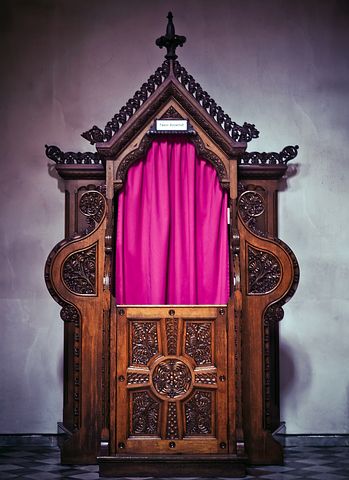




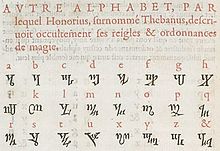 journals are anything to go by, I could back then. But now? Nope! It’s the so-called ‘Witches’ Alphabet’ (taken from Trithemius who apparently got it from a possibly mythical character), and I can’t read it.
journals are anything to go by, I could back then. But now? Nope! It’s the so-called ‘Witches’ Alphabet’ (taken from Trithemius who apparently got it from a possibly mythical character), and I can’t read it.
 living. But their visits also brought sickness, and that’s just what they brought to the people of a place called Frodis-water.
living. But their visits also brought sickness, and that’s just what they brought to the people of a place called Frodis-water. some of those laws might be. I am going to infer one right now: that our rights to this world are lost when we breathe our last.
some of those laws might be. I am going to infer one right now: that our rights to this world are lost when we breathe our last. The story of the door-courts suggests that both living and dead are equally bound by the law. We also see this reflected in the burial customs of those deemed to exist outside the protection of the law. These were often the criminals left to rot at the crossroads, those buried in unhallowed grounds, and those who were too young at the time of their passing to be formally accepted in a community (Petreman “Preturnatural Usage”). Is it any coincidence that the materia magica sought from the human body came most often from these sources? Is it also coincidence that those were the sources thought by the Ancient Greeks to carry the least miasma (Retief “Burial”)? To exist as dead inside the protection of the law is to sleep soundly – or at least it should mean that. Of course, there have always been violations as Burke and Hare could well attest.
The story of the door-courts suggests that both living and dead are equally bound by the law. We also see this reflected in the burial customs of those deemed to exist outside the protection of the law. These were often the criminals left to rot at the crossroads, those buried in unhallowed grounds, and those who were too young at the time of their passing to be formally accepted in a community (Petreman “Preturnatural Usage”). Is it any coincidence that the materia magica sought from the human body came most often from these sources? Is it also coincidence that those were the sources thought by the Ancient Greeks to carry the least miasma (Retief “Burial”)? To exist as dead inside the protection of the law is to sleep soundly – or at least it should mean that. Of course, there have always been violations as Burke and Hare could well attest. the holy powers, but fire also played an important role in property ownership too. For the Norse, carrying fire sunwise around land you wished to own was one method of claiming that land (LeCouteux 89), and under Vedic law new territory was legally incorporated through the construction of a hearth. This was a temporary form of possession too, with that possession being entirely dependent on the ability or willingness of the residents to maintain the hearthfire. For example, evidence from the Romanian Celts suggests that the voluntary abandonment of a place was also accompanied by the deliberate deconstruction of the hearth. And the Roman state conflated the fidelity of the Vestal Virgins to their fire tending duties with the ability of the Roman state to maintain its sovereignty. The concept of hearth as center of the home and sign of property ownership continued into later Welsh laws too; a squatter only gained property rights in a place when a fire had burned on his hearth and smoke come from the chimney (Serith 2007, 71).
the holy powers, but fire also played an important role in property ownership too. For the Norse, carrying fire sunwise around land you wished to own was one method of claiming that land (LeCouteux 89), and under Vedic law new territory was legally incorporated through the construction of a hearth. This was a temporary form of possession too, with that possession being entirely dependent on the ability or willingness of the residents to maintain the hearthfire. For example, evidence from the Romanian Celts suggests that the voluntary abandonment of a place was also accompanied by the deliberate deconstruction of the hearth. And the Roman state conflated the fidelity of the Vestal Virgins to their fire tending duties with the ability of the Roman state to maintain its sovereignty. The concept of hearth as center of the home and sign of property ownership continued into later Welsh laws too; a squatter only gained property rights in a place when a fire had burned on his hearth and smoke come from the chimney (Serith 2007, 71). fires burning. To maintain the hearth was to maintain possession of property, and to maintain the hearth, a woman was required. (Or several, if you happen to be the Roman state.)
fires burning. To maintain the hearth was to maintain possession of property, and to maintain the hearth, a woman was required. (Or several, if you happen to be the Roman state.)

 about that but I don’t.
about that but I don’t.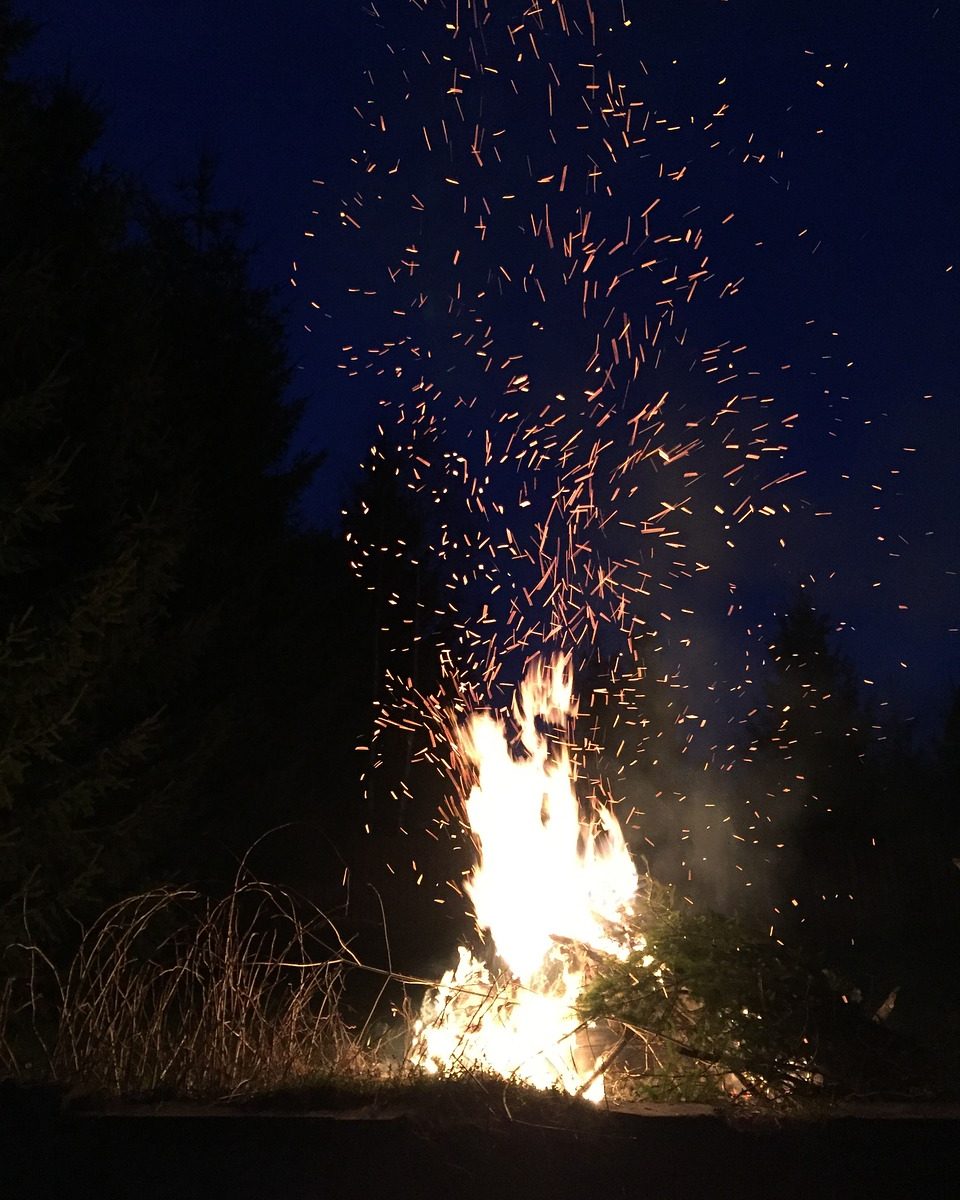
 like to ask you all how you’re feeling. So how are things?
like to ask you all how you’re feeling. So how are things? Some of the most common environmental factors that lead to this are things like “psychic impressions” left by horrid historical events; the influence of celestial bodies (as the aforementioned example of the lunar cycle); the time of year (liminal points especially); strong emotions from other humans; and especially strong emotions from other humans en masse. Of course, the degree to which these things will affect you very much depends on your personal level of sensitivity, and the most sensitive and empathic typically themselves more acutely affected than others.
Some of the most common environmental factors that lead to this are things like “psychic impressions” left by horrid historical events; the influence of celestial bodies (as the aforementioned example of the lunar cycle); the time of year (liminal points especially); strong emotions from other humans; and especially strong emotions from other humans en masse. Of course, the degree to which these things will affect you very much depends on your personal level of sensitivity, and the most sensitive and empathic typically themselves more acutely affected than others.

 good to try and burn purifying récels (incense) around your home such as either mugwort, or a rosemary/vervain/juniper mixture. This smoke can also be used for the self too (I like to burn it in a cast iron Dutch oven and just stand over it so that I’m enveloped by the smoke).
good to try and burn purifying récels (incense) around your home such as either mugwort, or a rosemary/vervain/juniper mixture. This smoke can also be used for the self too (I like to burn it in a cast iron Dutch oven and just stand over it so that I’m enveloped by the smoke).


 entice you into some kind of oath, your first move is always research. Go find out everything you can about them, and if it’s not available in physical sources, go pester allies for more information. Because there are a whole bunch of things you need to know here. For example, you need to know their MO; if they’re presenting themselves as they actually are; how others have fared dealing with them; and if they have a GSOH and enjoy long walks on the beach at sunset. Because all of that will not only help you figure out *who* you’re dealing with, but also help you better word any oaths you make so that you can do stuff like insert more protective clauses (which is #winning, trust me).
entice you into some kind of oath, your first move is always research. Go find out everything you can about them, and if it’s not available in physical sources, go pester allies for more information. Because there are a whole bunch of things you need to know here. For example, you need to know their MO; if they’re presenting themselves as they actually are; how others have fared dealing with them; and if they have a GSOH and enjoy long walks on the beach at sunset. Because all of that will not only help you figure out *who* you’re dealing with, but also help you better word any oaths you make so that you can do stuff like insert more protective clauses (which is #winning, trust me).

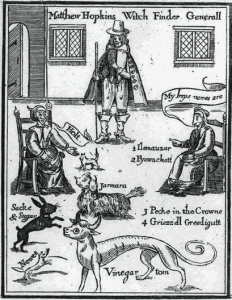
 Having said that though,
Having said that though, 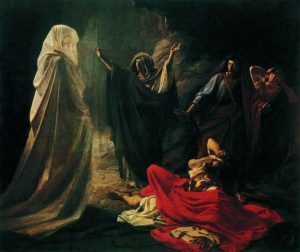 of the matter is that magical practitioners have been finding helping spirits and making pacts with them for a very, very long time. And like wands, familiars traverse a wide range of different cultures (albeit under different names – obviously).
of the matter is that magical practitioners have been finding helping spirits and making pacts with them for a very, very long time. And like wands, familiars traverse a wide range of different cultures (albeit under different names – obviously). Wilby’s period of study. Hall traces a pattern of witches working with mound-connected elves from the tenth century Old English magico-medical charm Wið Færstice and term ælfs?den (literally “elf-Seiðr”, or “elf-magic”); to Martin Luther’s account of being “shot” by a neighborhood witch; and finally to Isobel Gowdie’s accounts of encountering the Queen of Elfhame in a mound and seeing elves fashioning the shot. I personally take it somewhat further and point to the portrayal of Frey and Freyja in the Ynglingasaga. Freyja as the sacrificial priestess (and as we know, goddess associated with the form of magic known as “Seiðr”) ends up overseeing the cult to her brother, Freyr (who is associated with elves), even as he lies in the burial mound. The people bring offerings to the mound for peace and good seasons, and so even in death, he possesses a power that his sister does not.
Wilby’s period of study. Hall traces a pattern of witches working with mound-connected elves from the tenth century Old English magico-medical charm Wið Færstice and term ælfs?den (literally “elf-Seiðr”, or “elf-magic”); to Martin Luther’s account of being “shot” by a neighborhood witch; and finally to Isobel Gowdie’s accounts of encountering the Queen of Elfhame in a mound and seeing elves fashioning the shot. I personally take it somewhat further and point to the portrayal of Frey and Freyja in the Ynglingasaga. Freyja as the sacrificial priestess (and as we know, goddess associated with the form of magic known as “Seiðr”) ends up overseeing the cult to her brother, Freyr (who is associated with elves), even as he lies in the burial mound. The people bring offerings to the mound for peace and good seasons, and so even in death, he possesses a power that his sister does not. ” The transfer of George was further complicated by the queen of the Lowlanders, who demanded that Goodwin stop attempting to have George as his own personal spirit. At first Goodwin was a little resistant, but the queen insisted that if he would not willingly show her this preference, he should never see any of the Lowlanders. She wanted to be his number-one contact with the spirit world. Goodwin had little choice but to agree to her terms. As a consolation, George agreed to answer any questions directed at him as long as Goodwin turned his back and did not look directly where George stood. However, Goodwin could not understand the spirit very clearly, as he spoke in a low, soft voice close to Mary’s ear. So throughout their relationship, Goodwin relied on Mary to communicate with George.”
” The transfer of George was further complicated by the queen of the Lowlanders, who demanded that Goodwin stop attempting to have George as his own personal spirit. At first Goodwin was a little resistant, but the queen insisted that if he would not willingly show her this preference, he should never see any of the Lowlanders. She wanted to be his number-one contact with the spirit world. Goodwin had little choice but to agree to her terms. As a consolation, George agreed to answer any questions directed at him as long as Goodwin turned his back and did not look directly where George stood. However, Goodwin could not understand the spirit very clearly, as he spoke in a low, soft voice close to Mary’s ear. So throughout their relationship, Goodwin relied on Mary to communicate with George.”